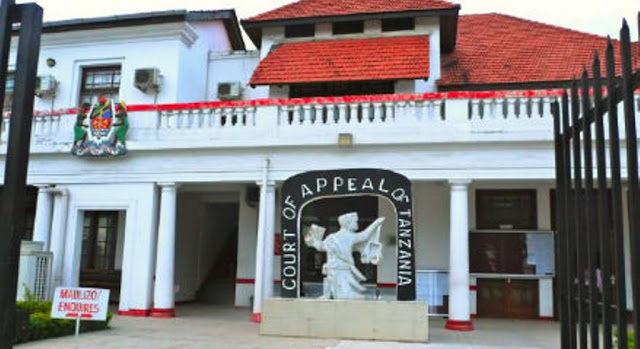By FAUSTINE KAPAMA-Judiciary
A resident of Songe area within Musoma District
and Municipality, Mara Region, Daniel Wasonga, is to be arrested and taken to
prison to serve 30-year-jail term and receive 24 strokes of the cane for raping
a girl aged fourteen years.
This follows a decision
of the Court of Appeal to allow the appeal lodged by the Director of Public
Prosecutions (DPP), the appellant, to oppose the judgment given by the High
Court, which had quashed the conviction and the sentence imposed by the trial
court against Wasonga, the respondent.
“In our evaluation of
the evidence as a whole we are satisfied as the trial court did, that the
prosecution proved its case beyond reasonable doubt. (…) this appeal has merit.
We hereby allow it, quash and set aside the decision of the High Court,”
Justices Stella Mugasha, Rehema Kerefu and Paul Kihwelo ruled.
During hearing of the
appeal, the appellant had forcefully submitted that the High Court Judge erred
in holding that the prosecution evidence on visual identification was not
watertight and erred in holding that the conviction by the trial Magistrate was
improper.
In their judgment
delivered recently at Mwanza, the justices said that the law on visual
identification in this country is well settled. They cited a landmark decision
of Waziri Amani, wherein the Court outlined factors that have to be considered
when courts deliberate on visual identification evidence.
Such factors include the
time and distance under which the witness had the accused under observation, conditions
in which such observation occurred (whether it was day or night-time), whether
there was good or poor lighting at the scene and whether the witness knew or
had seen the accused before or not.
It was their considered
opinion that the prosecuting attorney was right in that the incident in
question occurred in a broad day light and the respondent was not a stranger to
the victim.
Furthermore, they said,
the respondent and the victim spent quite sometimes together from the moment he
went to visit the victim, waited her to finish washing dishes, walked with her
to his home place and then the two walked together to the bush where she was raped
and told her to go back home.
“From the foregoing
evaluation of the evidence, we hold that the respondent was not necessarily
identified but was recognized by (the victim of rape) who knew him as a fellow
neighbour. This was clearly a case of recognition rather than identification,”
the justices said.
According to them, it
has been observed severally by the Court that, recognition is more
satisfactory, more assuring and more reliable than identification of a stranger.
The justices were settled
in their minds that matters at the trial court were neatly tied up only that
the High Court Judge did not properly evaluate the evidence on record,
otherwise she would not have arrived to the conclusions she did.
As to the holding by
the High Court judge that there was improper conviction, they noted that the
victim of rape was the prosecution star witness whose evidence was very
damaging to the respondent, apart from the cogent and credible evidence of
other prosecution witnesses.
“It is a peremptory principle
of law that the best evidence of sexual offence comes from the victim. In this
case (the victim of rape) graphically described how she was raped by the
respondent in the fateful day while ably explaining in minute detail how the
incident occurred,” the justices said.
They furthermore considered
the alleged minor contradiction between the testimony of the victim of rape and
another prosecution witness on the exact time when the respondent left with the
victim.
The justices pointed
out that it was true, as observed by the High Court Judge, that the respondent
went to their house in the afternoon while another witness said that the victim
went at 10:00am.
“Clearly this is a contradiction;
however, in our view this contradiction is very minor and does not go to the
root of the matter,” they said and cited another case in which the Court held, "Contradictions
by witness or between witnesses is something which cannot be avoided in any
particular case.”
The justices noted that
there may have been some confusion between the victim of rape and other witness
to what time exactly she went to the house where the respondent, but the
evidence was very clear that the respondent took the victim to the nearby bush
where he raped her.
“We are alive that due
to frailty of human memory a witness is not expected to be accurate in minute
details when retelling his story and more in particular if the matter is on
details. This discrepancy is very minor and does not go to the root of the
matter and therefore it can be glossed over,” they said.
It was the case for the
prosecution that on June 06, 2016 at Songe area within the District and
Municipality of Musoma in Mara Region, the respondent, had carnal knowledge a
girl aged fourteen.






Hakuna maoni:
Chapisha Maoni